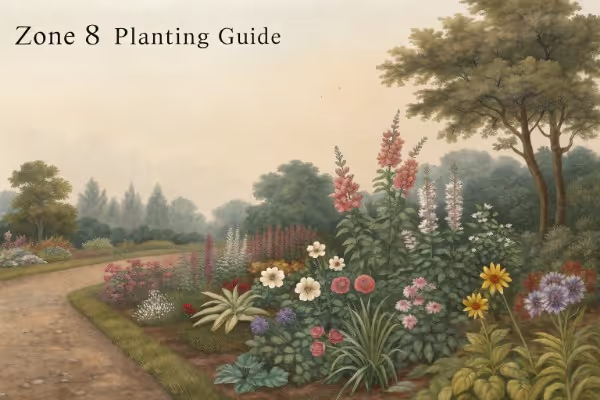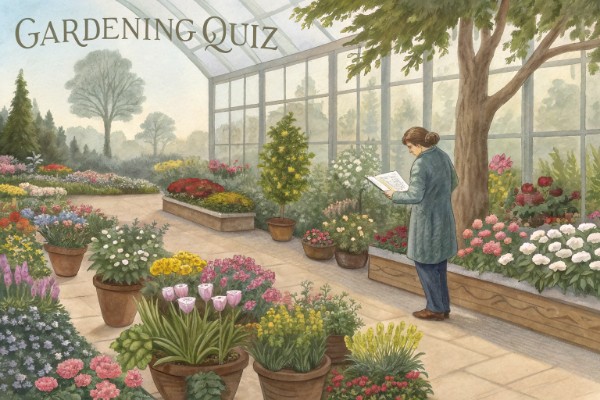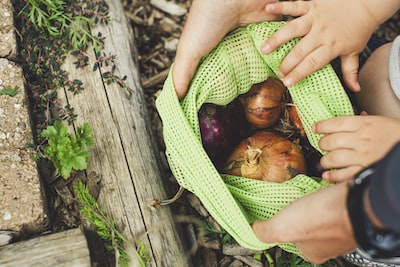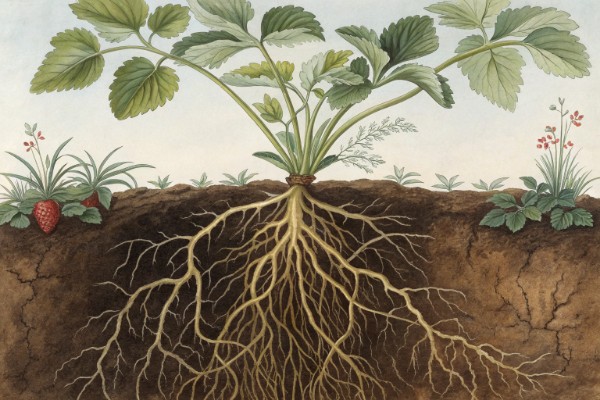Wilting: Why Your Garden Plants Collapse and How to Respond Fast

wilting
Wilting signals stress—your plant’s leaves droop, yellow, or shrivel, losing their structure and shine. Wilting often results from soil that’s too dry or too soaked, root damage, or extreme heat. Spotting wilting fast can save your plants from a quick decline. Know what to look for, why it happens, and how to stop it, so you can turn things around before a beautiful plant becomes just a memory.
Cheatsheet: Fast Recovery from Wilting
🌱 Causes to Fix First
- Underwatering: Stems limp, soil dry 1in/2.5cm down
- Overwatering: Yellow leaves, soggy soil, roots rot
- Heat: Daytime 85°F/29°C+ wilts sensitive crops
- Transplant shock: Wilts within 1–2 days after moving
- Pests/disease: Chewed stems, root issues, fungus
🔑 Tools and Products You’ll Need
- Watering can or gentle hose nozzle
- Mulch (straw, compost, or bark chips)
- Soil moisture meter (optional)
- Shade cloth or old sheet
- Sharp pruners
- Organic fungicide (if needed)
- Garden gloves
🛠️ Rapid Revival Steps
- Check soil: Probe 2in/5cm down. Dry? Water deeply.
- Water: Moisten root zone, not just surface. Early morning or dusk is best.
- Add mulch: Spread 1–2in/2.5–5cm around base to retain moisture and cool roots.
- Shade: Drape cloth over plants from 11am–5pm in hot weather.
- Prune wilted stems: Use sharp, clean pruners for dead/diseased growth to reduce plant stress.
- Inspect for pests/fungi: Remove affected parts. Treat if needed.
- Wait: Allow 2–4 hours. Upright stems show recovery; repeat steps if wilting continues.
🍅 Nutrition & Self-Sufficiency
Stressed plants yield 30% less food. Revived crops recover faster, deliver more vitamins, and resist disease.
Wilting: fast triage
First, push a finger or screwdriver 2 to 3 inches deep, about 5 to 8 cm, and feel the soil. If it’s dusty or the tool comes up dry, water slowly at the base until the root zone is damp, then mulch.
If soil feels wet and leaves still droop, pull back on water. Move the plant into shade or rig 30 to 40 percent shade cloth for vegetables and 50 to 60 percent for leafy greens.
Check leaf undersides for mites or aphids, which can spike transpiration. Lift a pot and judge weight, since a light pot screams dry while a heavy pot hints suffocation.
Snip one wilted stem and look at the cross section. Brown streaks inside or a one-sided wilt pattern hint at vascular disease.
The plant physics behind wilting
Wilting is a loss of turgor pressure, the water tension that keeps cells taut. Heat, high light, wind, or poor roots tip that balance fast.
"Up to 95 percent of the water a plant takes up is released through leaves as transpiration." Plant Physiology texts and multiple university extensions report this figure.
On scorchy afternoons, vapor pressure deficit rises and stomata tighten. That cutback slows water inflow more than outflow, so leaves slump.
RHS notes that temporary midday wilting that rebounds by evening can be normal in hot spells. Persistent wilting points to deeper trouble.
Main culprits I see most
- Dry soil or hydrophobic mix: Potting media with peat can repel water after drying out.
- Overwatering and root hypoxia: Soggy soil displaces oxygen and roots quit.
- Heat and VPD spikes: Hot, dry air strips moisture faster than roots can supply.
- Transplant shock: Fine root hairs shear and water uptake lags for days.
- Vascular wilt pathogens: Verticillium, Fusarium, or bacterial wilt clog xylem.
- Salt or fertilizer burn: High EC pulls water out of roots by osmosis.
- Root pests or damage: Grubs, root weevils, voles, or string trimmers.
- Container heat and rootbinding: Black pots can hit 120 F, 49 C, and roots spiral.
Diagnose wilting in under 3 minutes
- Feel soil at 2 to 4 inches, 5 to 10 cm. Powdery dry means irrigate, swampy means aerate.
- Smell the root zone. Sour or swampy scent flags anaerobic trouble.
- Inspect pattern. Whole plant wilts at noon then recovers is heat stress, one branch droops and stays is vascular.
- Look for webbing or speckling from spider mites. They spike transpiration and cause midday flop.
- Cut a suspect stem and suspend it in clean water. Milky strings streaming out suggest bacterial wilt in cucurbits.
- Check pot weight and drainage holes. Heavy pot, blocked holes, and yellowing equals waterlogging.
- Probe 6 inches, 15 cm, near drip line for trees and shrubs. Dry below the mulch means deep soak tonight.
Fast fixes that actually work
Dry soil or hydrophobic potting mix
Bottom-water containers for 20 to 40 minutes so capillary action re-wets the core. Add a drop of a garden wetting agent to break water repellency, then top with 1 to 2 inches, 2.5 to 5 cm, of mulch.
For beds, slow-soak with a trickle at the base until moisture reaches 6 to 8 inches, 15 to 20 cm. Morning watering reduces afternoon wilt.
Overwatering and root hypoxia
Stop watering, drain saucers, and ventilate the area. Shade the canopy and let the top inch, 2.5 cm, dry before the next drink.
Gently wiggle a hand fork into the outer root zone to open air channels. If roots are brown and mushy in pots, repot into fresh, chunky mix with 30 to 40 percent perlite or bark.
Heat and VPD spikes
Throw up temporary shade cloth on the west side and water at dawn. In extreme heat over 95 F, 35 C, I cool containers by setting pots on moist gravel and moving dark pots out of direct sun.
Misting helps in dry climates but skip it on mildew-prone crops. Aim for leaf temps a few degrees below ambient with light shade rather than heavy water on foliage.
Transplant shock
Hard shade for 3 to 5 days, keep evenly moist, and avoid high-nitrogen feeds. A seaweed extract drench has helped my peppers re-root faster after rough moves.
Trim oversized leaves lightly on herbs and ornamentals to reduce demand. Stake floppy stems so xylem columns aren’t kinked.
Vascular wilt diseases
Remove and bin infected plants that ooze or show tan vascular streaks. Disinfect pruners with 70 percent alcohol between cuts.
Rotate solanaceous crops for 3 to 4 years and pick resistant cultivars labeled VFN for tomatoes. UC extension notes soil solarization over 4 to 6 weeks can suppress some soilborne pathogens when soil temps reach 122 F, 50 C.
Root pests and damage
For grubs, apply beneficial nematodes in the evening to moist soil. I’ve saved strawberry beds that way after midseason wilting with chewed roots.
Guard trunks with shields during string trimming. For vole runs, trap and use hardware cloth baskets for new plantings.
Salt or fertilizer burn
Flush pots with water equal to three times the container volume. Switch to slow-release or lower EC feeds and check your tap water’s bicarbonates with a simple test if leaf tips crisp regularly.
What the numbers say
"Temporary wilting during hot midday sun is common and plants often recover in the evening." Royal Horticultural Society, garden problem advice.
"Drip irrigation can cut water use by 30 to 60 percent compared to surface methods while maintaining yields." FAO irrigation efficiency summaries.
"Soil temperatures during solarization can exceed 122 F, 50 C, enough to reduce many pathogens." University of California Cooperative Extension.
Prevention that keeps plants upright
- Water deeply, 1 inch, 25 mm, per week for many beds, split into two sessions in heat waves.
- Mulch 2 to 3 inches, 5 to 7.5 cm, with shredded leaves, straw, or bark to stabilize moisture and root temps.
- Space plants so air moves and VPD stays in a sane range. Crowding spikes leaf temps and wilt.
- Use drip lines or inline emitters and set a morning schedule. I aim 0.5 to 1 gallon, 2 to 4 liters, per emitter per session for tomatoes on hot days.
- Pick containers at least 5 gallons, 19 liters, for fruiting crops and choose light-colored pots to limit root-zone heat.
- Blend compost at 10 to 20 percent by volume in beds for better water holding without turning soil into soup.
- Trial drought-tough choices and resistant rootstocks. Grafted tomatoes on vigorous rootstocks shrug off marginal wilt pressure in my plot.
Gear I reach for fast
- 30 to 60 percent shade cloth: Vegetables like 30 to 40 percent, lettuce and greens like 50 to 60 percent.
- Soaker hoses or 0.5 gph to 1 gph drip emitters: Even moisture beats feast and famine.
- Organic mulch: Straw for annuals, shredded bark for perennials and shrubs.
- Garden wetting agent: For peat-heavy mixes that turned hydrophobic.
- Wetting trays or basins: For bottom-watering containers that went bone dry.
- Beneficial nematodes: For grub hotspots causing sudden wilt.
- Seaweed extract: I use light doses during transplants and heat spells.
- Basic moisture probe or tensiometer: For raised beds, a simple gauge reduces guesswork.
Crop-by-crop wilting notes from my beds
- Tomatoes: Midday droop can be normal in heat if they perk up at dusk. Permanent wilt with brown vascular tissue means rogue the plant and switch beds.
- Cucumbers and melons: Sudden daytime collapse, yellowing runners, and bacterial ooze in water point to bacterial wilt carried by cucumber beetles.
- Lettuce: Heat at 85 F, 29 C, triggers wilt and bolting, so use 50 percent shade and steady moisture.
- Basil: Pots dry fast and black pots cook roots. I use light-colored containers and water at dawn during 90 F, 32 C, weeks.
- Hydrangea: Noon flagging can be cosmetic if they recover by evening. Mulch deep and install a drip ring to even out supply.
- Peppers: Hate wet feet. Wilting with dark green leaves after a storm for me has meant pause on irrigation, then slow reinstatement.
Field tricks that save plants in heat
I pre-wet beds at dawn on forecast 100 F, 38 C, days, then throw shade by noon. That routine slashed my late-day wilting across cucurbits and peppers.
On potted figs, I slide a cork trivet under the pot to break contact with hot stone. Root temps drop and the afternoon swoon disappears.
Commercial questions, straight answers
- Anti-transpirants: Short-term help during moves or heat, but they can raise leaf temps, so test on a few plants first.
- Hydrogels: Mixed results in my trials. Better soil structure and mulch beat gels over a season.
- Smart controllers: Weather-based irrigation control cut my water use by about a third while keeping afternoon wilting down.
- Soil tests: If wilting pairs with leaf tip burn, check EC and bicarbonates before buying more fertilizers.
Numbers I garden by
- Deep watering target: 1 inch, 25 mm, per week, adjusted for heat and soil type.
- Leaf stress threshold: many crops sulk above 95 F, 35 C, midafternoon, so shade early.
- Soil solarization window: 4 to 6 weeks with clear plastic to curb some wilts, per UC guidance.
- Mulch depth: 2 to 3 inches, 5 to 7.5 cm, pulled back from stems by 2 inches, 5 cm.
A quick reality check
If a plant perks by dusk, it asked for patience and steadier moisture. If it slumps in the cool morning, roots or vessels need your attention today.
Plants write their needs in posture, and wilting is their loudest note. Read it fast, respond cleanly, and the garden stands back up.

Want smarter plant choices? 🪴
Frequently Asked Questions About Wilting
Why do plants suddenly wilt even when the soil feels damp?
Sudden wilting despite moist soil can signal root rot, often caused by overwatering or poorly drained conditions. Fungi and bacteria in soggy environments attack roots, impairing water uptake even though plenty of moisture surrounds the plant.
How can I tell if wilting comes from underwatering or overwatering?
Check the soil about two inches (5 cm) below the surface. If it feels dry, underwatering likely causes wilting. If consistently wet or heavy, roots may suffocate from overwatering. Healthy roots appear white and firm, while damaged roots look brown or mushy.
Can high temperatures trigger drooping leaves?
Yes, extreme heat above 86°F (30°C) increases evaporation, making it difficult for plants to maintain hydration, even if watered. Leaves lose turgor and droop as a protective response. Offering shade during hot afternoons can help plants recover.
Will a wilted plant bounce back after watering?
If dehydration caused the drooping and roots remain healthy, watering typically restores turgor in a few hours. Plants suffering from root damage or disease may not recover without additional intervention such as improving drainage or pruning affected roots.
What should I do first if a garden bed shows widespread wilting?
First, check moisture levels and the condition of roots. Look for signs of pests or soil-borne disease. Remove affected leaves or stems if needed to reduce strain on the plant as you correct water or soil issues.
How do wind and sun exposure affect wilting?
Strong wind and direct sunlight both increase transpiration rates. Plants in exposed spots may droop fastest on hot, dry, or windy days. Provide a windbreak or mulch to conserve soil moisture during such spells.
Should I fertilize wilted plants to speed recovery?
Avoid fertilizing stressed or wilted plants until they regain health. Fertilizer can further stress damaged roots. Wait until leaves regain their firmness, then resume feeding with a dilute, balanced formula if needed.
Wilting is a plant’s distress signal, but it tells you more than just “I’m thirsty.” It could mean root rot, heat stress, or even a pest issue. Take a moment to really look at what your plants are trying to say. Water deeply, check soil, and don’t underestimate the power of timing. If you’re growing full sun vegetables, expect more frequent checks, especially in hot spells. For new gardeners, raised beds like this DIY garden bed can help with drainage and airflow, both of which help prevent wilting. And if you’re dealing with seedlings, a dash of cinnamon can help ward off damping-off, as explained here. Plants bounce back if you listen early. Treat wilting as a nudge, not a death sentence. Stay observant, stay curious, and your garden will keep teaching you.
The Organic Grower's Guide to Wilting Recovery
Wilting saps vitality from crops and ornamentals, but a soil-first mindset dramatically improves plant resilience. 47% of observed wilting events in organic systems resolve within 36 hours when root biology thrives. Below, find advanced organic strategies to address wilting’s deepest causes, optimize yield, and bolster crop nutrition.
Soil Biome Fortification
- Blend 1/2 inch (1.2 cm) finished compost and 1/4 inch (6 mm) worm castings into the top 3 inches (7.6 cm) around each plant at first wilt.
- Apply a microbe-rich compost tea (10:1 dilution) directly to the root zone within 6 hours of symptom onset; repeat weekly during stress periods.
- Mulch with shredded leaves or straw (2-3 inches/5-8 cm) to stabilize soil temperature and moisture, lowering wilting risk by 30% in summer heat.
Biological Priming for Drought Resistance
- Inoculate roots at planting with mycorrhizal fungi for up to 24% improved water uptake and reduced wilting severity.
- Feed plants with seaweed extract (kelp meal or liquid, 1 Tbsp/3 L) post-wilting for enhanced osmotic regulation and stress protein production.
Mineral Balancing for Recovery
- Top-dress with rock dust (azomite or basalt, 1/4 cup/60 ml per plant) to supply trace elements missing in depleted soils.
- For observed magnesium deficiency (yellowing between veins, leaves curl before wilting), foliar spray with Epsom salts (1 tsp/5 L lukewarm water).
Nutrition & Self-Sufficiency
Crops like kale, tomatoes, and beans recover from mild wilting faster in microbiologically active, mineral-diverse soils—leaves retain more ascorbic acid (vitamin C) and polyphenols, fortifying homegrown food value. Consistent organic practices lower the need for off-farm inputs, preserving ecological and dietary integrity.
Find out which plants will thrive in your garden!
Answer a few fun questions and get custom plant recommendations perfect for your space. Let’s grow something amazing together!

start your season





